If the great majority of human beings pull nightcaps over their eyes in regard to what Spiritual Science has to offer, then one day, in a form unsuited to Western mentality, spiritual treasures will pour from Chinese culture, and this portion of humanity, in their amazement, will realize that the products of such culture cannot be grasped by the pedantic thought common in the West, but only by deeper insight into the Taoist culture which arose on the soil of the ancient Chinese civilization.
– Rudolf Steiner, “Evidence of Bygone Ages”, in Earthly and Cosmic Man
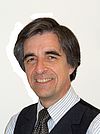 Take a moment to look about you and to register all the items in the scope of your view that have come from China. If you were to turn them upside down or pull out their tags, how many of them would say, “Made in China”? Indeed, how many parts of the computer you are viewing at this very moment came from that distant country?
Take a moment to look about you and to register all the items in the scope of your view that have come from China. If you were to turn them upside down or pull out their tags, how many of them would say, “Made in China”? Indeed, how many parts of the computer you are viewing at this very moment came from that distant country?
This is but one indication of the degree to which we are now linked to China, a nation that for many of us remains as mysterious as ever, even though a growing number of us have visited the far periphery of its distant shores. This issue of our newly launched newsletter––Center & Periphery––is focusing on the theme of China, partly because two of our faculty have recently visited that country, including fledgling Waldorf schools in Beijing, Chengdu, and Xian. Just as Chinese products are flowing with increasing volume to the West, so trickles of Waldorf education––and a steady stream of Waldorf visitors––are flowing into China.
When I visited China over 20 years ago (in the year before the watershed protests of 1989 centered around Tiananmen Square), there was barely any Waldorf presence in China, though the Chinese were getting interested in Western forms of culture including education. I remember touring a Chinese musical conservatory for elementary-aged children and marveling at their command of Western music and musical instruments. They even appeared to be reading from Western musical scores, which are written with totally different symbols from Chinese musical notation. (This apparent display of sight-reading was for the benefit of Western visitors, we soon realized, since the scores set on music stands before the children bore no relation to the music they were playing –– by heart, as it turned out.)
Today the scene is quite different, despite attempts since 1989 to stem Western cultural influences that continue to seep into Chinese life. Below we offer you a few vignettes from life in China, along with some other brief articles related to China and Waldorf education ––for instance, a glimpse into one U.S. Waldorf school that requires all of its high school students to take at least one year of Mandarin along with special art classes in calligraphy.
We hope you enjoy this Journey to the East.
Douglas Gerwin, Director
Center for Anthroposophy
Upcoming Events
June 27, 2010
Week 1 of our 11th annual Renewal Courses begins
July 4, 2010
Week 2 of our 11th annual Renewal Courses begins
July 6, 2010
an evening of poetry and music with Patrice Pinette & Friends.
Sponsored by the Renewal Courses Programof the Center for Anthroposophy
July 4 – 30, 2010 Waldorf High School Teacher Education Program begins
July 11 – 30, 2010
Antioch University Waldorf Program begins
Dateline China: Jottings from the Notebooks of Torin Finser
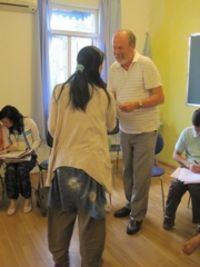 Torin Finser, Chair of the Education Department at Antioch University New England and founding director of the Center for Anthroposophy, spent a week in China this month working with Waldorf teachers in Chengdu, Sichaun Province. Here are some of his initial impressions.
Torin Finser, Chair of the Education Department at Antioch University New England and founding director of the Center for Anthroposophy, spent a week in China this month working with Waldorf teachers in Chengdu, Sichaun Province. Here are some of his initial impressions.
The People: Everywhere. 1.4 billion is no longer such an abstraction. The streets are filled with people on foot, on mopeds, on three-wheelers that putt-putt up the hills, in taxis and private cars. There are few traffic laws and fewer followers of these laws: my three-wheeler sometimes went against the oncoming traffic, and no one seemed to stop at red lights. For me, countless new sights and sounds –– outdoor vendors selling food, blacksmithing on the sidewalk, cooking in stalls, construction everywhere.
The Chengdu Waldorf School: Set on a hillside on the outskirts of town, the school is bursting with growth and enthusiasm. They have 250 students in K-8 grades, with a waiting list of 300. They are putting up several new buildings, and even contemplating starting a high school. I was amazed when meeting with the faculty to see a circle of 50 chairs –– turns out each teacher has an assistant, most of whom are enrolled in teacher training.
The children would run up to me and walk alongside for a while, just to experience what it was like to accompany “a really tall person”. (In fact, I was at least a foot taller than most adults there.)
The Children: China’s “one child policy” is now two generations old, meaning that most young adults and almost all the children come from single-child homes. Teachers talk about the “little emperor” syndrome – children who are raised by up to six adults (parents plus two sets of grandparents) who dote on them from morning to eve. This has resulted in socialization issues in some of the classes, and teachers often find it hard to conduct group activities.
There is also the issue of male preference, with rumors of many hundreds of thousands of girls officially “unaccounted for” –– i.e. not registered with local school districts or on the move from one town to another to avoid detection. Parents in the cities tend to be more liberal and have more girls, while the countryside is overwhelmingly populated by boys. (If parents want to have two children, they have to pay a fine equivalent to one year’s salary.)
The Language: I learned a few Mandarin phrases and came to appreciate the particular nuances of sound found in that language. When I have traveled elsewhere, there has almost always been someone who speaks English, but that was not the case in Chengdu. In a restaurant, on the street or even at the airport, I often could not find a single person who spoke English. Fortunately the school provided me with a wonderful translator who accompanied me almost everywhere. I was totally lost without her. For instance, since my suitcase never arrived, I had to buy some necessities in local stores without the aid of an interpreter. After many gestures and demonstrations to illustrate the need for deodorant, all I could get them to sell me was some bug spray, which had mixed results.
The Time Zones: With China half-way around the world from home and therefore 12 time zones distant, I found myself teaching through the night (our time) and tossing and turning in bed during their night. I am told it takes a day to reset two hours of jet lag, which meant I felt finally present only on the last day of my week in China.
The hardest part of the travel was not the short three-hour hop from Chengdu to Shanghai, but the 15-hour flight from Shanghai to New York. And then Boston thunderstorms kept us grounded in NY for an extra hour. I can now appreciate how oppressive interrogation techniques have successfully used the suspension of time and space. We are highly dependent on both for a sense of identity.
Philosophical notes: Since I have spent all my life in Western cultures, I take for granted many basic concepts about the nature of human individuality. These include notions of self development, personal responsibility, private property, privacy, rugged individualism, etc. Many of these notions were challenged during my China visit. Mao Zedong wrote: “All work done for the masses must be done from their needs and not from the desire of any individual.” (Little Red Book, p. 124). Even decades after his passing, some of Mao’s orientation toward “the masses” can still be felt. For example, I commented that no one seemed to wear helmets when riding motorcycles. In response, my guide said that a few months ago a decision was made somewhere that everyone should wear them, and from one day to the next everyone did. After about a week, word got out that the decision would not be enforced and so, just as suddenly, everyone stopped wearing them. This kind of collective action would be unheard of in our ‘live free or die” state of New Hampshire.
Yet I had the opportunity to present several aspects of Anthroposophy in the context of the teachings of Confucius. Going back to this source, one finds statements such as: “The ancients who wished to illustrate virtue throughout the Empire, first ordered well their own States. Wishing to order well their States, they first regulated their families. Wishing to regulate their families, they first cultivated their persons. Wishing to cultivate their persons, they first made their hearts right. Wishing to regulate their hearts, they first sought to be sincere in their thoughts” (The Wisdom of Confucius, p.17). Here we have a deep-seated orientation toward perfection of self, a theme that resonated strongly in my group when I talked about basic exercises such as open mindedness, positivity, equanimity, and control of thought and will.
It would appear to this novice observer that both strands still live in China today: a strong sense of the collective, due in part to the sheer number of people who must work and live together; and a sense of individualism taken now mostly in the direction of material progress. Trade, money, and business success seem to be the new motivators for many people today. One of the most stirring statements made during my visit was that for many today, there are no ideals anymore. Everything has become a matter of material progress, and notions of individualism are couched in terms of fulfillment of desires and gratification of the senses.
Not just for China but for many around the world, one has to wonder what would happen if the façade of materialism were to crumble. How would people orient themselves if their identity were not so bound up with the “things” of this world? Would there be a corresponding awakening of the human spirit?
Dateline China: What Do Teachers Want to Know?
 During his week-long visit to the Chengdu Waldorf School in Sichuan Province, Torin Finser faced a barrage of questions from young but dedicated teachers and their assistants representing some 20 Waldorf schools and initiatives from several Chinese provinces. Here is a sampling of their questions and concerns:
During his week-long visit to the Chengdu Waldorf School in Sichuan Province, Torin Finser faced a barrage of questions from young but dedicated teachers and their assistants representing some 20 Waldorf schools and initiatives from several Chinese provinces. Here is a sampling of their questions and concerns:
“Number One” issue identified by participants for discussion group work: What is the healthy way for Waldorf education to grow in China?
Note: In China, there is no legal status of non-profit or (501(c)3)). This means that an independent school must either be part of a business or be owned by an individual. Most Chinese Waldorf schools have to identify one person as the legal owner of the school, and that person writes checks to all the employees each month and pays all the bills, personally. The schools walk a very fine line in regard to government scrutiny. For example, most of the land is owned by the government. This means a school may put up buildings but the land still belongs to the government, which may claim rights, for instance, to run high-speed train tracks through the property at any time. All this makes things very difficult for schools.
Among the questions that the Chinese teachers posed during our discussions:
- Tell us three things about Waldorf education that have made the deepest impression on you. Likewise: what are three things that trouble you the most? Three things that you are happiest about?
- When you were giving lessons to children in the primary school, did you ever use the “angry tongue” when there was chaos in the classroom? What are your views on anger management?
- What are the differences between Waldorf schools and state schools in the U.S. in regard to examinations, content of lessons, payment to teachers, relationship between teachers and students or teachers and parents?
- How do parents deal with the internal conflict when they feel the teacher is unqualified and yet the teacher plans to stay with the class for up to eight years?
- How do I know whether I am qualified to be a Waldorf teacher?
- Please compare Anthroposophical medicine to Chinese medicine.
- Waldorf education is wonderful –– so why is it not part of main stream education?
- What is the management model used in a Waldorf School?
- What can we do when nobody steps forward to take responsibility and few participate in “teacher self management”?
Dateline China: Perspectives of Chinese Waldorf Teachers
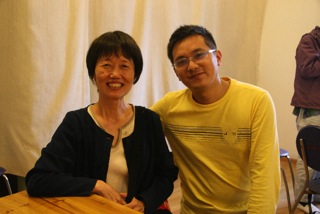 At the end of a grueling week of working with the faculty at the Chengdu Waldorf School, during which he offered two lectures a day as well as afternoon workshops, Torin Finser received reflections from the teachers on their experience. Here are some sample comments, translated from the original Chinese.
At the end of a grueling week of working with the faculty at the Chengdu Waldorf School, during which he offered two lectures a day as well as afternoon workshops, Torin Finser received reflections from the teachers on their experience. Here are some sample comments, translated from the original Chinese.
- I got many pictures in my mind and much feeling in my body about Waldorf education from Torin’s lectures. I now have the confidence to strive to be a qualified Waldorf teacher in the future.
- Torin’s book has changed the direction of my life. I had planned to be a businesswoman for the rest of my life, but after reading the book, I decided to be a main class teacher. And this course provided a lot of help and support to me.
- I learned much that is connected with my inner world.
- Many confusions in my heart have been resolved.
- I have a strong feeling that my next wonderful journey is about to start thanks to your sharing of experiences.
- Your little stories and examples helped us understand what you said. Please bring even more stories to China next time.
- I liked the way you balanced discussions and games between the lectures…..I could feel the alternation of concentration and relaxation.
- Waldorf education in China is still at its very beginning, as fragile as a seed just about to sprout. It is for sure that we need more support and more help, so energetic, wise teachers like you are warmly welcomed to come and mentor us.
Dateline China: Teaching Mandarin in an American Waldorf High School
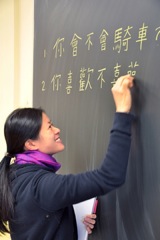 Christine Chen, a teacher and administrator at the Santa Fe Waldorf School, reports on a unique program in which the entire ninth grade spends a full year learning to speak and read the Mandarin language –– as well as to write its intricate characters with calligraphy using brush and ink.
Christine Chen, a teacher and administrator at the Santa Fe Waldorf School, reports on a unique program in which the entire ninth grade spends a full year learning to speak and read the Mandarin language –– as well as to write its intricate characters with calligraphy using brush and ink.
Each year since 2006, the entire ninth grade at the Santa Fe Waldorf High School has had the exciting opportunity of studying at least one year of Mandarin Chinese. At present this is the only Waldorf high school in North America to require a full year of this language, though several other schools offer either Mandarin or Japanese as an elective. The Santa Fe school’s introductory language program complements the 9th grade regional studies course on China. The purpose of this program is to create a foundation for students to learn this language in various forms – written, spoken, and cultural. For most students, it is their first experience of learning a tonal, non-alphabetical language.
During the year, students develop a basic capacity to listen to and speak the four tones of Mandarin. Pinyin is introduced to help students learn pronunciation. The written character is an important component of learning Chinese, and memorization is initially considered to be most daunting. To aid in this endeavor, the students learn the basics of stroke order and develop a rudimentary understanding of the radical system used to organize characters.
In addition, students experience some of the arts of Chinese culture, from Chinese calligraphy and cinema to various regional cuisines. The art of Chinese calligraphy––a highly venerated skill in traditional circles––provides an exercise in learning to write characters beautifully. The actual experience of attempting calligraphy for the first time reveals just how difficult it can be simply to write one horizontal stroke with a brush! It is truly an art and this experience gives the student a deeper appreciation for the written characters.
This past year for the first time, the tenth grade class continued to study Chinese for a second year. This unique opportunity gave students another chance to continue working on the skills they had developed, and to deepen their understanding of the language.
Dateline China: Excerpts from the Journals of Meg Gorman
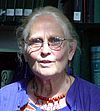 Meg Gorman, veteran Waldorf high school teacher of humanities and history instructor in the Waldorf High School Teacher Education Program at the Center for Anthroposophy, spent part of her half-year sabbatical advising several Waldorf schools in China as part of a round-the-world journey. Here is the first in a series of excerpts taken from her travel journal.
Meg Gorman, veteran Waldorf high school teacher of humanities and history instructor in the Waldorf High School Teacher Education Program at the Center for Anthroposophy, spent part of her half-year sabbatical advising several Waldorf schools in China as part of a round-the-world journey. Here is the first in a series of excerpts taken from her travel journal.
Chinese cities are arranged in rings marked by major ring roads. The first ring surrounds the center of the city, usually where the old inner city wall once stood. Consecutive ring areas surround the first like rills in a lake form around a thrown stone. The city grows poorer and poorer the farther out one goes. Large new cars yield to smaller older cars and then to motor cycle carts and taxis, which, in turn, yield to bicycle trucks and bicycle taxis, and finally to hand-pulled carts in the last ring. People in the outer ring are really poor.
Wu Bei, who spent a year at Emerson College, has written a book about her experience there, and is trying to bring Waldorf education to Beijing, a Herculean task. With the help of visitors––Tammy (an American anthroposophist who did teacher training in New Zealand and once ran a Waldorf home daycare) and Thanh Cherry (a very experienced Waldorf kindergarten teacher and mentor)––Wu Bei has spearheaded a kindergarten in the Fifth Ring. It is one room in a larger school that began as “Montessori.” People here will try anything in the realm of education and tack on a name like Montessori to make it bone fide. “Montessori” here seems to mean complete license, more like the free-wheeling Summerhill School in England than anything Maria Montessori would have initiated. I continue to feel her writhing in her grave at what people are doing in her name. However, all this is because there is a strong sense among some here that Chinese public education is not good for children.
Most children in China are in school by the age of 2.5 months, and the latest fashions are government-sponsored boarding kindergartens for children five and older who stay all week and go home on weekends. The public education is largely academic and high pressured, and works on a system of rewards and punishment, frequently corporal. In addition there is a woman who is very popular here who is offering an antidote to the public schools that she initially called Montessori. Her recommendations include the following: give the children whatever they want, let them do whatever they want, tell them nothing that is not scientific, tell no fairy tales, teach them to use computers as young as they are able, reward them with candy and give them as much as they want. Once a week, children are encouraged to bring candy to school to share with others. When asked if this would ruin their teeth, she has said that parents didn’t need to worry because the children would get new teeth. The situation is grim. Never have I felt the need for Waldorf education so much.
The “kindergarten” I visited in Beijing is filled with 18 to 20 tiny children ranging in age from 2.6 to five. The room is large and quite a good space for the children, and it has many good things in it. I saw two teachers, Wong Lei, a young woman, and Song, a young man, who were doing an adequate job of creating a rhythmic, artistic day for these little ones. Both teachers are around twenty years old and have no idea of why they are doing what they are doing. Wu Bei insisted that everyone who works at the kindergarten attend my two evening lectures, and some eyes were rolling. I tried to explain to her that one becomes a Waldorf teacher out of a free choice.
I spent one intense evening discussing what it means to start a Waldorf school and the principles of group working. This was quite foreign to everyone. China is a world of top-down management, and rewards and punishments. The very little pay the teachers are receiving often gets docked if the head of school feels a teacher has done something wrong. There is no discussion. The teachers find out about the pay decrease when they picked up their salaries. In the course of all this, I discovered that most of the workers at the school were new Christians, and I spent three hours discussing Christianity and Steiner with them. They were very anxious to know whether or not Rudolf Steiner had been a good Christian.
I stayed two days in Ring Five on the top floor of the kindergarten where several of the teachers and the assistants live. The site was actually quite lovely, with a garden, a large play area, and sunny classrooms. However, life on the top floor was near Dickensian. There was no heat and only squat toilets. The shower area had no drains. One bathed by turning on a hand-held shower nozzle, using it as an inch of water flooded the tile floor, and finally mopping it all up with a provided bucket and wet mop. Common sense was hard to come by in Ring Five.
Thus, life was sober in Beijing. The vacuum left by Communism, the Cultural Revolution, and the famine that followed it, has been filled with a highly competitive materialism fed by the worst of the West. Few on the street look up or smile. Many of the people I met were pale and seemed to be without imagination. Though university educated, they know next to nothing about their own history, and, until recently, they were forbidden to celebrate their cultural festivals with the exception of the New Year. One of the teachers, who had studied Chinese history in the U.S. at Wesleyan University, said he often found himself teaching it to local youths, hungry to know something outside the current party line.
As in Beijing, a group of educators in Shanghai wants to make a school, but they do not understand what is really needed. Waldorf-like kindergartens are possible and are far better than anything else currently being offered. However, the depth and educated staff required to build a community-based Waldorf school is simply not yet in place in eastern China.
I spent a wonderful morning in the Shanghai History Museum, where I discovered how advanced Chinese civilization was way before the West could read and write. (I feel our American Waldorf curriculum needs to reflect this more fully.) I was relieved to see how much of the culture had been preserved in this excellent museum, newly created in the shape of an ancient Chinese pot, the dong. I wish every Chinese child would get to spend hours here to see the level of artistry that belongs to their culture from fabulous old bronzes to beautiful, peaceful Buddhas. When I reached the floor filled with exquisite screens decorated with poetry in beautiful brush calligraphy, I grew very sad. Here was delicate loveliness in landscapes and scenes of nature. The people of China lost a lot of this during the Cultural Revolution. The rooms in the museum devoted to the making of porcelain and the hand painted works of the Ming Dynasty were stunning.
In terms of Waldorf education, I had a sense that many of the people whom I met had a destiny to bring Waldorf education to eastern China. However, because of their own educations and the recent history of China, they were simply unable to do so. It felt as though individual destinies had really been thwarted. This tragic element pulses through the entire culture. Because no one here has anything to compare life to, they do not know what they have lost: so much art, music, dance, and––maybe worst of all––common sense. We in America take so much for granted.
Meg’s journal now takes us to Thailand before returning for a second stint in China. Her story will be resumed in the next issue of “Center & Periphery”. Stay tuned!
Renewal Courses: Faust and the Foundation Stone
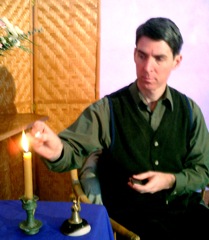 Among the new courses added to a stellar line-up of Renewal Courses this summer:
Among the new courses added to a stellar line-up of Renewal Courses this summer:
- Theater workshop on Goethe’s Faust and the transformative power of drama, with the celebrated actor Glen Williamson
- Artistic workshop on Rudolf Steiner’s seminal Foundation Stone Meditation through speech, eurythmy, and the study of the the first Goetheanum, with Rudiger Janish from the Camphill Community
Glen Williamson, a founding member of The Actors’ Ensemble in New York City, is well known for his one-man shows as well as his award-winning off-Broadway play The Boy Who Saw True. Glen has played the title role in Aeschylus Unbound, which he co-wrote with the late film star Mala Powers, and he tours in Goethe’s Tale of the Green Snake and the Beautiful Lily. Professionally trained in the Michael Chekhov acting technique and at The Julliard School, Glen has also performed with the American Conservatory Theater in San Francisco and the American Stage Festival in New Hampshire. Glen’s workshop during the first week of Renewal Courses––a journey through Goethe’s majestic play Faust––will be filled with games, drama, storytelling, and improvisation. For a full description of his course, click here.
Rudiger Janish, a resident in the Camphill movement who has worked in curative education for over 35 years, has taught in professional training programs both in the U.S. and abroad. His current focus is the development of artistic and experiential approaches to the anthroposophic image of the human being. Rudiger will explore Rudolf Steiner’s Foundation Stone Meditation as a metamorphosis of the First Goetheanum during the second week of Renewal Courses. For a full description of his course, click here.
To see the full Renewal Courses brochure for both Week One––Sunday 27 June to Friday 2 July––and for Week Two––Sunday 4 July to Friday 9 July––click here. Or visit our website: www.centerforanthroposophy.org
Foundation Studies of Anthroposophy and the Arts
 Among the half-dozen clusters in Foundation Studies around the country sponsored by the Center for Anthroposophy, two––one in the Far North, one in the Deep South––are featured in this brief update by Barbara Richardson, Foundation Studies Coordinator.
Among the half-dozen clusters in Foundation Studies around the country sponsored by the Center for Anthroposophy, two––one in the Far North, one in the Deep South––are featured in this brief update by Barbara Richardson, Foundation Studies Coordinator.
Culmination of Foundations Cluster in Freeport, ME
A festive dinner on May 23rd in the beautifully lazured ellipse of Merriconeag Waldorf School’s grade 5-8 building marked the close of Year Two for this group of participants. Douglas Gerwin, Director of the Center, and Barbara Richardson, the Center’s Foundation Studies Coordinator, led the final session of eurythmy, presentation, and conversation. It began with Douglas inviting the participants to create together a lovely review of the past two years, and then went on to the presentation of the different qualities in any threefold human or social organism – needs we share, opportunities we all should have, and our choice to take initiative. The cluster in Freeport drew five young prospective (kindergarten, grade school and high school) Waldorf teachers, long-time parents, and a Waldorf “lifer” who graduated from the Waldorf School of Garden City and is currently home-schooling her children in northern Maine.
Click here for information on the new cluster of Foundation Studies at the Merriconeag Waldorf School in Freeport, Maine beginning in the fall of 2010.
Beginning of Foundations Cluster in Ashville, NC
Asheville, North Carolina with its Waldorf initiative (starting grade 1 next fall) has our largest ever Foundation Studies cluster with 38 participants. Marie Davis, local coordinator for the cluster, called Barbara Richardson, FS program coordinator, last summer. She had been interested in the Anthroposophic view of the human being for many years and had attended several conferences and workshops in Spring Valley and Chapel Hill, with an eye on bringing this activity to Asheville. While Barbara worked with Marie to sculpt a custom-designed program that would fit the needs of the community, Marie reached out to various educational, bio-dynamic agriculture, and Anthroposophic study groups.
Elizabeth Gilbert, a eurythmist living in Asheville, is an anchoring presence among the many visiting faculty, and brings the flowing life of eurythmy to the group at each monthly session. Rick Spaulding spoke about Steiner and Emerson; Carol Triggiano introduced story telling with the path of Steiner’s How to Know Higher Worlds. Margaret Health continued this unfolding path of the heart, and Douglas Gerwin concluded the first half of the initial year with the importance of clear observation and thinking in Anthroposophy in Everyday Life.
Next fall we continue with “Biodynamic Agriculture at Michaelmas” with Lloyd Nelson and Jon Lyerly. Michael Howard will then take up the theme of “Theosophy and the Arts.” New registrations are still being taken for the fall.
Click here for more details of this cluster.
Waldorf High School Teacher Education Program
Of the 40 Waldorf high schools in North America, almost a third are being led this year by students or graduates of the Center’s Waldorf High School Teacher Education Program. Here is a listing of schools in which our students have assumed senior leadership roles:
Academe of the Oaks
Leadership Group: Sharon Annan, Ben Roosevelt, M.J. Smith, Tara Wyman
Austin Waldorf School
High School Chair: Cat Russell
Hawthorne Valley School
High School Chair: John Cronin
High Mowing School
Faculty Co-Chair: Wendy Bruneau
Lake Champlain Waldorf School
High School Co-Coordinator: Elizabeth Dews
Merriconeag Waldorf School
High School Chair: Jeff O’Brien
Monadnock Waldorf School
High School Chair: Karl Schurman
Seattle Waldorf School
High School Director: Lisa Ayrault
Shining Mountain Waldorf School
College Chair: Jamie York
Vancouver Waldorf School
High School Chair: karin burns
Washington Waldorf School
Faculty Chair: Natalie Adams
Youth Initiative High School
Program Director: Jacob Hundt
In all, students and graduates of our program are working full- or part-time in 42 Waldorf schools, either in North America or abroad.
Thanks to several new programs starting in the next month––including a “fast track” Masters degree for experienced Waldorf educators––the Waldorf Teacher Education Program at Antioch University New England is looking forward to record-breaking enrollment this summer. Arthur Auer, Director of the Waldorf program at Antioch, reports:
Summer 2010: Largest Enrollment Ever in Antioch’s Waldorf Program
A record 105 students have enrolled this summer in the Waldorf Teacher Education Program of Antioch University New England.
For the first time Antioch is running four, rather than two, Summer Sequence groups in addition to the two Year Round Keene-based campus groups. Antioch now admits a new Summer Sequence group every year instead of every other. The fourth Summer Sequence group is a new contingent of Experienced Waldorf Educators.
All of these programs are held on the adjacent campuses of High Mowing and Pine Waldorf School atop Abbot Hill in Wilton, New Hampshire. This record enrollment is due in part to the start-up of an accelerated two-summers program for experienced Waldorf educators seeking a Masters degree (see separate news item below).
New Waldorf Experienced Educator Program Begins Two-Summer Program
A pioneering group of eight “Experienced Waldorf Educators” will embark on a new 32-credit M.Ed. Degree program, starting next month. These Waldorf teachers have been accepted into an accelerated two-summers track (instead of the usual three summers). They will take advanced courses in subjects ranging from Research, Contemplative Inquiry, Evolving Consciousness studies, Contemporary Curriculum Issues, Education for Social Renewal and Organizational Integrity to classes in speech, creative writing, and other arts.
This advanced track program is designed for Waldorf educators who
- have seven or more years of Waldorf teaching experience
- have opted to take particular courses at an advanced level and work in specialized focus areas of research
- have need of a deeper, more tailored approach to their advanced Waldorf background
- may have completed unaccredited teacher training in the past and now want to earn a fully accredited university masters degree
The overall aim of this specialized masters program is to move beyond the study of content to the active engagement made possible through spiritual scientific research.
Words on the Wind: An evening of poetry and music with Patrice Pinette & Friends
Tuesday 6 July 2010
7:30 p.m.
Big Room, High Mowing School
Sponsored by the Renewal Courses Program of the Center for Anthroposophy
Renewal: a beautiful word. Our friends at the Center for Anthroposophy have created an opportunity that lives up to its name. I have attended Renewal Courses’ summer workshops as student, teacher, and performer, and in each instance have found a surge of connection, inspiration, and encouragement, new energy for inner work and for my tasks in education and the arts.
Beauty, as we know, is restorative. Renewal Courses explore ‘friendships’ between the arts and a great variety of subjects, as well as between the arts themselves. An example of this creative collaboration is an evening of poetry and music all are invited to attend. Together, poet and musician reach for expression beyond words; where mundane language fails to speak for the heart, creativity begins.
“Love plays/and is the music played. Let that musician/ finish this poem.” ~Rumi.
Please join us for Words on the Wind, an evening of poetry by Patrice Pinette, with guest appearance by Beverly Boyer on harp.
Having gone so far into solitude
that one fears dying alone
not a soul to say good-bye to…
a sigh escapes wistful or a whistle
unwittingly in the midst of some chore
in spite of the failures that ground
to a halt all that was buoyant before
spring music maddening the birds
at their joys and petals strong
as thoughts insinuate carols
in some irrepressible key come
by breath alone unpremeditated
art of survival
lilting out of the blue
~Patrice Pinette
